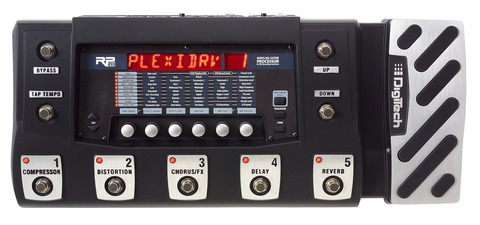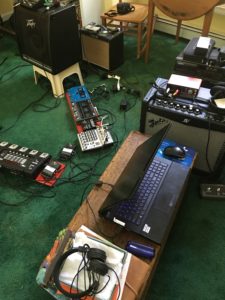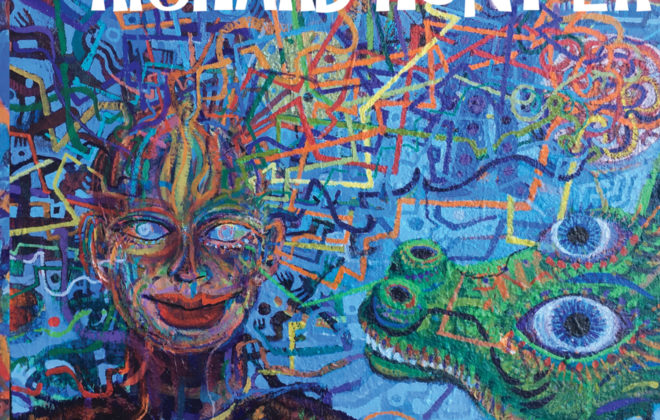
One of the things that make my sounds different
It occurred to me today that working with multiFX devices like the Fender Mustang 3 and the Digitech RP500 has allowed me to approach sound design in a very different way. Call it an FX-centric approach rather than an amp-centric approach.
We’re all familiar with the amp-centric approach. The amp and the mic, and perhaps a delay or reverb, are the only devices in the signal chain, so the sound produced by the amp is paramount. A given type of effect may or may not sound good with a particular amp, and any effect added to the chain must work well with the amp above all. I know that’s obvious, and I think most players just take it for granted, if they think about it at all.

Amps are big, heavy, and expensive, even the cute little 5-watters that are the starting point for many a player, and it makes sense that if you have to invest that much in a piece of gear to buy it and haul it around, it ought to have the deciding vote over everything else in the setup–mic, delay, reverb, whatever. The problem is that a particular type of effect may not work with a particular amp/mic/etc., and nobody’s got enough time and money to try every device out there to find the one that works with a particular amp. So the amp-centric approach isn’t very conducive to experimentation with FX.
The FX-centric approach is a lot more supportive for experimentation (and for saving the successful experiments, too). A tube amp might have a great sound; an amp modeling device can produce a lot of good to great amp sounds, and if you don’t like the way an effect sounds with one of them, you can keep trying different amp models until you find the one that works (or get bored and move on). Further, you can tune a given amp and EQ model to bring out the very best an effect can offer–bigger, smoother bass for low octaves, sparkle for a rotary speaker, smooth pads for vibrato. You can even tame notorious feedback monsters like wah wah pedals and autowahs. It’s very cool.
I’m not going to carry on and on about it, but I think there’s a lot to be said for choosing the amp that goes with your FX, rather than the other way around. It wasn’t practical before amp modeling came into the picture. Now it is.
Tags In
Related Posts
Leave a Reply
You must be logged in to post a comment.
WHAT’S NEW
Categories
- Audio/Video
- Blog
- Blue Future
- Digitech RP Tricks and Tips
- Discography, CDs, Projects, Info, Notes
- Featured Video
- For the Beginner
- Gallery
- Hunter's Effects
- Hunter's Music
- Huntersounds for Fender Mustang
- Meet the Pros
- More Video
- MPH: Maw/Preston/Hunter
- My Three Big Contributions
- Player's Resources
- Pro Tips & Techniques
- Recommended Artists & Recordings
- Recommended Gear
- Recorded Performances
- Reviews, Interviews, Testimonials
- The Lucky One
- Uncategorized
- Upcoming Performances
- Zoom G3 Tips and Tricks

